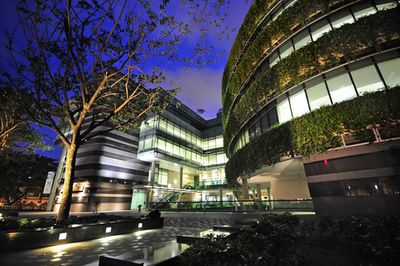Difference between revisions of "ANLY482 AY2016-17 T2 Group09: Project Overview"
Tjwang.2013 (talk | contribs) |
Tjwang.2013 (talk | contribs) |
||
| Line 6: | Line 6: | ||
<div> | <div> | ||
{|style="background-color:#000066; border-top:3px solid #1D393D; border-bottom:3px solid #1D393D; color:#000000 padding: 5px 0 0 0;" width="100%" cellspacing="0" cellpadding="0" valign="top" border="0" | | {|style="background-color:#000066; border-top:3px solid #1D393D; border-bottom:3px solid #1D393D; color:#000000 padding: 5px 0 0 0;" width="100%" cellspacing="0" cellpadding="0" valign="top" border="0" | | ||
| + | | style="padding:0.4em; font-size:100%; background-color:#000066; font-family:Book Antiqua; text-align:center; color:#E6E87D" width="10%" |[[ANLY482_AY2016-17_Term_2 |<font color="#ffffff" size=3><b>Back To Main</b></font>]] | ||
| style="padding:0.4em; font-size:100%; text-align:center; background-color:#000066; font-family:Book Antiqua; color:#E6E87D " width="20%" | [[ANLY482_AY2016-17_T2_Group09|<font color="#ffffff" size=3><b>Home</b></font>]] | | style="padding:0.4em; font-size:100%; text-align:center; background-color:#000066; font-family:Book Antiqua; color:#E6E87D " width="20%" | [[ANLY482_AY2016-17_T2_Group09|<font color="#ffffff" size=3><b>Home</b></font>]] | ||
Revision as of 13:20, 20 February 2017
Sponsor Background
Li Ka Shing (LKS) Library is the first library of Singapore Management University, officially opened on 24 February 2006. The Library is named after Hong Kong businessman Dr. Li Ka-shing, and the Li Ka Shing Foundation donated and endowment to the library for collections. The main objective of the library is to offer an interactive study and research space for SMU community.
The LKS library includes four floors that comprise about 8,800 square meters with 1,800 seats. Inside the library, there are a variety of spaces including open spaces for individual and collaborative use, learning commons which opens 24/7, quiet areas that for individuals to focus on their work, project rooms with LCD panels, investment studio, postgraduate lounges etc. As a modern library, it is also well equipped with high-speed wireless network, color printers, scanners, public computers with professional financial software available, up-to-date newspapers and magazines, collections of lifestyle videos and games, and this is also the reason why LKS library is so attractive for SMU community.
Project Background
In our project, our focus is on analyzing the library entry information from the card reader logs. The card readers are located at the entrance of the library, both located at the main entrance of LKSLIB and at the linkbridge side entrance, and students need to tap their card whenever they enter the library. This provides us with the entry information, which includes timestamp and basic information about the student. To better understand the library usage, the library management team is interested to know whether we could find a pattern about the usage of library for a particular user group (e.g. Information Systems undergraduate, Year 2), and if any business insights could be drawn from the data. Another part of the analysis is about group detection, meaning that several people always tend to appear together in the library, to see how could library provide better study environment for group users. New topics such as hogging rate analysis (together with the occupancy data of the library) may also be considered.
Motivations
The management team of LKSLIB are striving for better customer experience, especially the physical study environment in LKSLIB. To get more information from the library user, they have collected information from social media platforms, user surveys feedbacks, etc. However, unlike the information about online search request, it was hard for them to collect statistics about the physical usage of the library, especially the usage of a specific user group. LKSLIB utilizes card reader to control the entrance of the library, and when student approaches the entrance and taps in, a log will automatically be generated with the student information and the timestamp. Recently, the library management teams decide to look into this dataset to have a better understanding about the physical usage of the library. Combined the card reader log with the student database, they could get the entrance information about each single library user, but this is not enough. With the help of data analytics technology, the management team is looking for more detailed insight about the students’ usage of the physical library.
Objectives
The aim of our project is to help the library management team to have a deeper understanding about the student usage of the physical library with the help of the card reader data, and to support their decision making process of the improvement in user experience with data analytics technologies. The objectives of our project consist the following:
- To summarize the library entrance information of a specific user group
- To detect the group of users who usually stick together
- To analyze the hogging situation in the library
- To build a tool for library management team to visualize the data collected interactively
